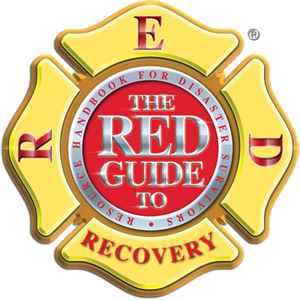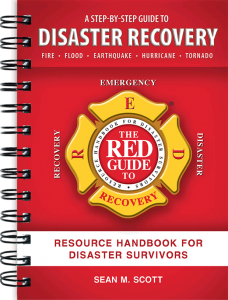By Sean M. Scott & Briana C. Scott
When you think of charred wood, ash left behind after a wildfire, or soot, you might think that they are little more than harmless byproducts of incomplete combustion. Afterall, haven’t people cooked their food and kept warm by burning wood in their stoves and fireplaces for millennia?
When you see photos taken in the aftermath of structure fires or wildfires, where people are trying to salvage valuables, assess the damage, or clean up, it is rare to see people wearing proper respirators, Tyvek suits, or other PPE. Images of people sifting through the ash in their street clothes to find valuables or walking through a burned-out home in shorts and flip-flops gives the impression that post-fire environments are relatively safe. However, this is far from the truth.
Risks of Exposure to Burned Wood
The World Health Organization estimates that roughly 4 million people worldwide die prematurely each year from diseases caused by the domestic burning of wood. (1) The WHO states “While the situation in developing countries, where people often cook over open fires in their homes, is more dire, wood burning is nonetheless becoming a major public health concern in the developed world as well. In Denmark, pollution from wood burning now contributes approximately 50% “of all health damages from Danish pollution sources” according to a 2016 report by the Danish Ecological Council. The Danish Centre for Environment and Energy at Aarhus University has estimated that wood stoves cost that country approximately $800 million in annual air pollution-related costs. According to the Danish Ecological Council, pollution from wood burning is now the most health damaging and expensive environmental problem in Denmark, causing several times more harm than fine particles from domestic road traffic.” (2,3)
That being said, maybe there’s more to the story about soot, char, and ash that first responders, restorers, insurance adjusters, and fire survivors need to be aware of.
Soot and Sir Percivall Pott’s Discovery
 Sir Percivall Pott (1714-1788) was an English surgeon and the first scientist to demonstrate that cancer may be caused by an environmental carcinogen. In 1775, Pott found a correlation between chimney sweeps’ exposure to soot and a high incidence of a condition called “soot wart”, a cancer later found to be squamous cell carcinoma. The cancer primarily affected chimney sweeps who had been in contact with soot since their early childhood.
Sir Percivall Pott (1714-1788) was an English surgeon and the first scientist to demonstrate that cancer may be caused by an environmental carcinogen. In 1775, Pott found a correlation between chimney sweeps’ exposure to soot and a high incidence of a condition called “soot wart”, a cancer later found to be squamous cell carcinoma. The cancer primarily affected chimney sweeps who had been in contact with soot since their early childhood.
In the 1700s and early 1800s, boys (often orphans) as young as 4 years of age, known as “climbing boys”, were used as chimney sweeps due to their small size, which allowed them to fit inside chimney flues. During this time in history, most people burned wood in their fireplaces to keep warm. It wasn’t until the early 1800s that coal was being widely used.
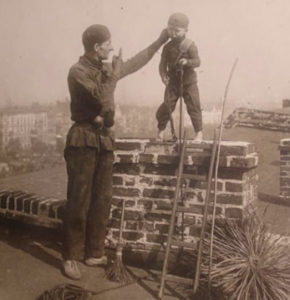
A chimney sweep with a child apprentice
Boys as young as 8 years old contracted the disease and many suffered an array of other debilitating illnesses resulting in respiratory and cardiovascular ailments and even blindness. It is believed that dermal absorption, inhalation, and ingestion of soot and creosote triggered the diseases.
Pressure Treated Lumber
Most buildings in the U.S. contain pressure treated lumber. Because of its ability to resist rot, fungi, and termites, it is commonly used for outdoor fencing, decks, and picnic tables. It is also widely used as a substitute for standard lumber in areas where termites are a problem, such as Hawaii where termites cause roughly $100 million dollars in damage annually. (4,5)
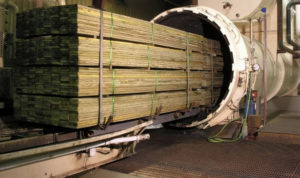
Pressure treated lumber being manufactured
Prior to 2003, pressure treated lumber was manufactured with a chemical known as Chromated Copper Arsenate (CCA), which contained arsenic. Arsenic is a toxic heavy metal classified by the EPA as a known carcinogen. Exposure to arsenic can cause a wide range of diseases, including cancers of the lungs, skin, liver, kidney, prostate, and bladder. CCA contains 47.5% hexavalent chromium, 18.5% copper, and 34% inorganic arsenic. Even if pressure-treated wood doesn’t contain CCA, it still contains other hazardous insecticide and fungicide chemicals.
Ammoniacal Copper Zinc Arsenate (ACZA) is a newer formula and successor of CCA. It consists of copper, zinc, and arsenic. Unfortunately, ACZA is also harmful when burned, and exposure to it increases the risk of chronic respiratory disease and cancer. (6,7) Here is a Safety Data Sheet that supports the fact that ACZA is carcinogenic: https://www.matheuslumber.com/userfiles/acza.pdf
When pressure treated wood burns, the heat does not destroy the arsenic it contains. Burning this wood releases the chemical bond that holds the arsenic in the wood where it becomes part of the soot and ash. According to the Journal of American Medical Association, even minute amounts of the “fly ash” from burning treated wood can have serious health consequences.
In 1982, The Journal of the American Medical Association reported on a family in Wisconsin that burned CCA treated wood. All the family members suffered severe recurring nosebleeds, extreme fatigue, and debilitating headaches. The parents complained about ‘blacking out’ for periods of several hours, followed by extended periods of extreme disorientation. The two youngest children had multiple seizures described as grand mal from birth to 1 year. They displayed recurrent “measles-like” rashes on their bodies, as well as reddened thickened skin on the soles of their feet. Most striking was recurring seasonal alopecia, ranging from thinning of the hair in the parents to complete baldness in the youngest children. The symptoms were traced to breathing minute amounts of arsenic laden dust.
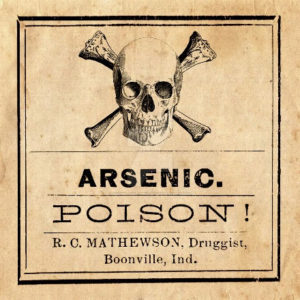 It was later discovered that the home had been heated with a small wood stove in which pressure treated wood was burned. The ashes from the stove spread throughout the home, and test results showed that the ash contained more than 1,000 ppm of arsenic. Source: The Journal of the American Medical Association May 11, 1984, Volume 251 (JAMA 1984;251:2393–2396) (8,9)
It was later discovered that the home had been heated with a small wood stove in which pressure treated wood was burned. The ashes from the stove spread throughout the home, and test results showed that the ash contained more than 1,000 ppm of arsenic. Source: The Journal of the American Medical Association May 11, 1984, Volume 251 (JAMA 1984;251:2393–2396) (8,9)
Fire survivors and restoration practitioners should be aware that although CCA treated wood for residential use was banned in 2003, risk of exposure to arsenic laden particulate and ash remains high in buildings where treated lumber has burned, especially in the form of fine or ultrafine airborne particulate. When inhaled, ultrafine particles behave like gases and pass through the lungs directly into the bloodstream. These particles can also travel through the nose and affect the central nervous system via the olfactory nerve.
Arsenic is more toxic than lead and it should be noted that OSHA’s permissible exposure limit (PEL) for arsenic is 10 micrograms per cubic meter of air (10 µg/m3) in comparison with lead, which is 50 micrograms per cubic meter of air (50 μg/m3).
Safety Data Sheet (SDS) Information for Wood Ash
In the restoration industry, Safety Data Sheets (SDS’s) are required documents that provide information about the hazards of a product and advice about safety precautions. The following selected information was copied from Weyerhaeuser Safety Data Sheet WC 173-10 Rev. 4/22/2021 for Wood Ash as an example of how toxic this substance is. The SDS can be found here: https://www.weyerhaeuser.com/application/files/2716/1962/4131/Wood_Ash_SDS_2021.pdf
Hazard(s) Identification Signal Word: DANGER

Prolonged or repeated inhalation exposure to respirable crystalline silica may cause lung cancer and permanent damage to the respiratory system.
- Carcinogen Category 1A – Crystalline silica may cause lung cancer
- Specific Target Organ Toxicity (STOT) May cause damage to the respiratory system through prolonged or repeated exposures if inhaled.
- Eye corrosion – Category 1, Skin irritant Category 2 – Causes skin burns and serious eye damage
- Acute Toxicity – Category 4 – Corrosive, harmful if swallowed
Composition/Information on Ingredients – Wood char and ash may contain trace (ppt levels) amounts of dioxin compounds.
Exposure Control Measures/Personal Protection
Personal Protective Equipment:
- RESPIRATORY PROTECTION – Use NIOSH-approved filtering face piece respirator (“dust mask”) or higher level of respiratory protection as indicated and goggles where ventilation is not possible and exposure limits may be exceeded or for additional worker comfort or symptom relief. Following a determination of risk from potential exposures, use respiratory protection in accordance with requirements such as US-OSHA respiratory protection standard 29CFR 1910.134.
- PROTECTIVE GLOVES – Cloth, canvas, or leather gloves are recommended when handling the dry product to minimize potential mechanical irritation. Discard gloves with contaminated interiors.
- EYE PROTECTION – An emergency eye wash fountain should be present near areas of potential eye exposure. Goggles or safety glasses are recommended when handling this product.
- OTHER PROTECTIVE CLOTHING OR EQUIPMENT – An emergency shower should be present near areas where extensive skin contact is possible. Protective clothing with long sleeves or disposable outer garments may be desirable in extremely dusty areas.
- WORK/HYGIENE PRACTICES –The use of barrier skin cream may prevent skin irritation in susceptible individuals. Be aware that irritation may occur where PPE such as goggles or dust masks contact skin surfaces.
Signs and Symptoms of Exposure:
Chronic Health Hazards: Prolonged inhalation of crystalline silica may result in silicosis, a disabling pulmonary fibrosis characterized by fibrotic changes and miliary nodules in the lungs, a dry cough, shortness of breath, emphysema, decreased chest expansion, and increased susceptibility to tuberculosis. Advanced silicosis may result in death due to cardiac failure or destruction of lung tissue. Chronic inhalation of sufficient quantities of crystalline silica may also cause lung cancer.
Carcinogenicity Listing:
Wood ash is considered to be a hazardous chemical in accordance with OSHA classification criteria. Since respirable crystalline silica may be present in the material, refer to OSHA standards 1910.1053 (General Industry) and/or 1926.1153 (Construction) if applicable.
The National Institute of Occupational Safety and Health defines an immediately dangerous to life or health (IDLH) condition as a situation “that poses a threat of exposure to airborne contaminants when that exposure is likely to cause death or immediate or delayed permanent adverse health effects or prevent escape from such an environment.” Fire survivors, restorers, insurance adjusters, or anyone else who needs to enter a fire damaged structure where wood has burned, should be aware of the health risks and always wear proper personal protective equipment.
Sources:
- World Health Organization: https://www.who.int/news-room/fact-sheets/detail/household-air-pollution-and-health
- Woodsmokepollution.org: https://woodsmokepollution.org/real-costs-of-wood-burning.html
- Green Transition Denmark: https://issuu.com/ecocouncil/docs/rgo_pollution-from-residential-burning_uk
- College of Tropical Agriculture & Human Resources – University of Hawaii at Manoa: https://www.ctahr.hawaii.edu/oc/freepubs/pdf/HSP-3.pdf
- US National Library of Medicine National Institutes of Health: https://www.ncbi.nlm.nih.gov/pmc/articles/PMC5492072/
- Cuttingedgefirewood.com: https://www.cuttingedgefirewood.com/news/can-i-burn-pressure-treated-wood/
- Montana Boy Scouts of America https://montanabsa.org/major-health-risk-burning-treated-lumber/
- The Journal of the American Medical Association: https://jamanetwork.com/journals/jama/article-abstract/392751
- US National Library of Medicine National Institutes of Health: https://www.ncbi.nlm.nih.gov/pmc/articles/PMC5412102/ https://www.nap.edu/read/4795/chapter/14
 Sean is the Author of Secrets of the Insurance Game and The Red Guide to Recovery – Resource Handbook for Disaster Survivors. Sean has also written numerous articles and papers on smoke and fire related issues. If you would like more information, please feel free to contact Sean Scott at sean@theredguidetorecovery.com.
Sean is the Author of Secrets of the Insurance Game and The Red Guide to Recovery – Resource Handbook for Disaster Survivors. Sean has also written numerous articles and papers on smoke and fire related issues. If you would like more information, please feel free to contact Sean Scott at sean@theredguidetorecovery.com.
 Briana is the co-author and editor for Heritage Publishing & Communications. She has been instrumental in providing and interpreting information regarding the ecological effects of disasters. Briana also adds invaluable knowledge and understanding of scientific processes and her research has helped raise awareness of a wide range of post-disaster health and environmental hazards.
Briana is the co-author and editor for Heritage Publishing & Communications. She has been instrumental in providing and interpreting information regarding the ecological effects of disasters. Briana also adds invaluable knowledge and understanding of scientific processes and her research has helped raise awareness of a wide range of post-disaster health and environmental hazards.
